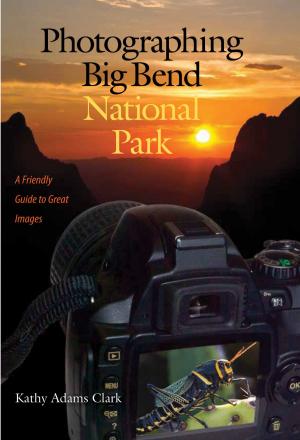Holy Ground, Healing Water
Cultural Landscapes at Waconda Lake, Kansas
Nonfiction, Science & Nature, Nature, History, Americas, United States| Author: | Donald J. Blakeslee | ISBN: | 9781603447928 |
| Publisher: | Texas A&M University Press | Publication: | September 7, 2010 |
| Imprint: | Texas A&M University Press | Language: | English |
| Author: | Donald J. Blakeslee |
| ISBN: | 9781603447928 |
| Publisher: | Texas A&M University Press |
| Publication: | September 7, 2010 |
| Imprint: | Texas A&M University Press |
| Language: | English |
Most people would not consider north central Kansas’ Waconda Lake to be extraordinary. The lake, completed in 1969 by the federal Bureau of Reclamation for flood control, irrigation, and water supply purposes, sits amid a region known—when it is thought of at all—for agriculture and, perhaps to a few, as the home of "The World’s Largest Ball of Twine" (in nearby Cawker City).
Yet, to the native people living in this region in the centuries before Anglo incursion, this was a place of great spiritual power and mystic significance. Waconda Spring, now beneath the waters of the lake, was held as sacred, a place where connection with the spirit world was possible. Nearby, a giant snake symbol carved into the earth by native peoples—likely the ancestors of today’s Wichitas—signified a similar place of reverence and totemic power.
All that began to change on July 6, 1870, when Charles DeRudio, an officer in the 7th U.S. Cavalry who had served with George Armstrong Custer, purchased a tract on the north bank of the Solomon River—a tract that included Waconda Spring. DeRudio had little regard for the sacred properties of his acreage; instead, he viewed the mineral spring as a way to make money.
In Holy Ground, Healing Water: Cultural Landscapes at Waconda Springs, Kansas, anthropologist Donald J. Blakeslee traces the usage and attendant meanings of this area, beginning with prehistoric sites dating between AD 1000 and 1250 and continuing to the present day. Addressing all the sites at Waconda Lake, regardless of age or cultural affiliation, Blakeslee tells a dramatic story that looks back from the humdrum present through the romantic haze of the nineteenth century to an older landscape, one that is more wonderful by far than what the modern imagination can conceive.
Most people would not consider north central Kansas’ Waconda Lake to be extraordinary. The lake, completed in 1969 by the federal Bureau of Reclamation for flood control, irrigation, and water supply purposes, sits amid a region known—when it is thought of at all—for agriculture and, perhaps to a few, as the home of "The World’s Largest Ball of Twine" (in nearby Cawker City).
Yet, to the native people living in this region in the centuries before Anglo incursion, this was a place of great spiritual power and mystic significance. Waconda Spring, now beneath the waters of the lake, was held as sacred, a place where connection with the spirit world was possible. Nearby, a giant snake symbol carved into the earth by native peoples—likely the ancestors of today’s Wichitas—signified a similar place of reverence and totemic power.
All that began to change on July 6, 1870, when Charles DeRudio, an officer in the 7th U.S. Cavalry who had served with George Armstrong Custer, purchased a tract on the north bank of the Solomon River—a tract that included Waconda Spring. DeRudio had little regard for the sacred properties of his acreage; instead, he viewed the mineral spring as a way to make money.
In Holy Ground, Healing Water: Cultural Landscapes at Waconda Springs, Kansas, anthropologist Donald J. Blakeslee traces the usage and attendant meanings of this area, beginning with prehistoric sites dating between AD 1000 and 1250 and continuing to the present day. Addressing all the sites at Waconda Lake, regardless of age or cultural affiliation, Blakeslee tells a dramatic story that looks back from the humdrum present through the romantic haze of the nineteenth century to an older landscape, one that is more wonderful by far than what the modern imagination can conceive.















